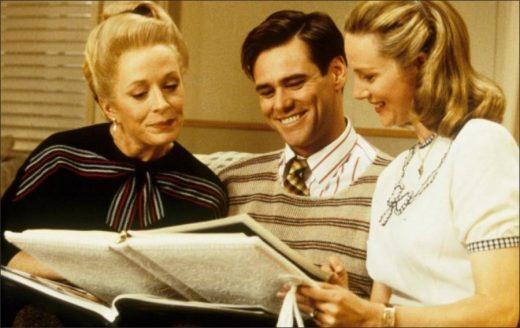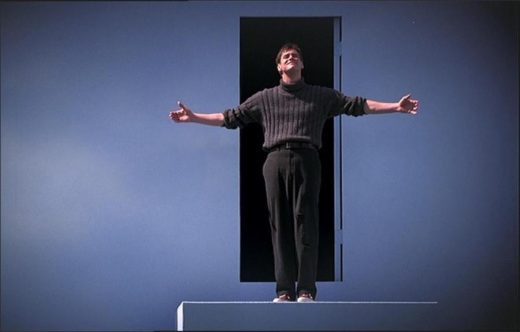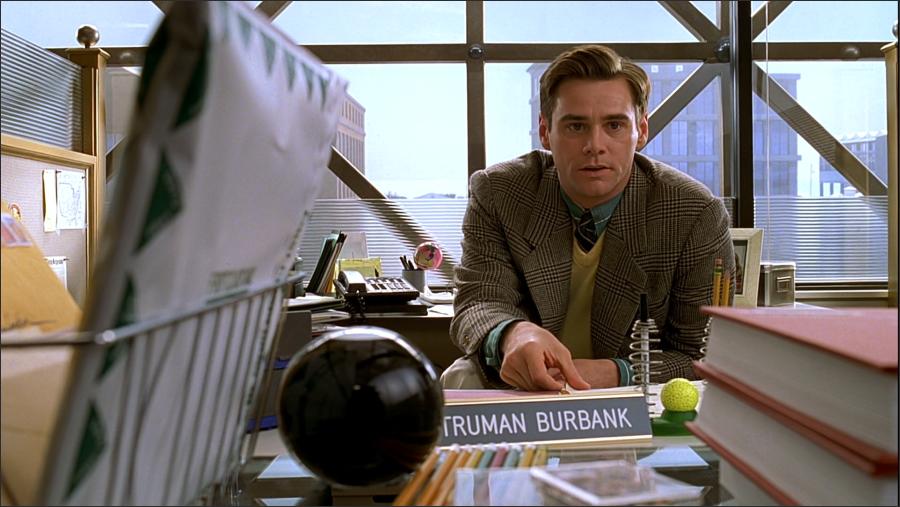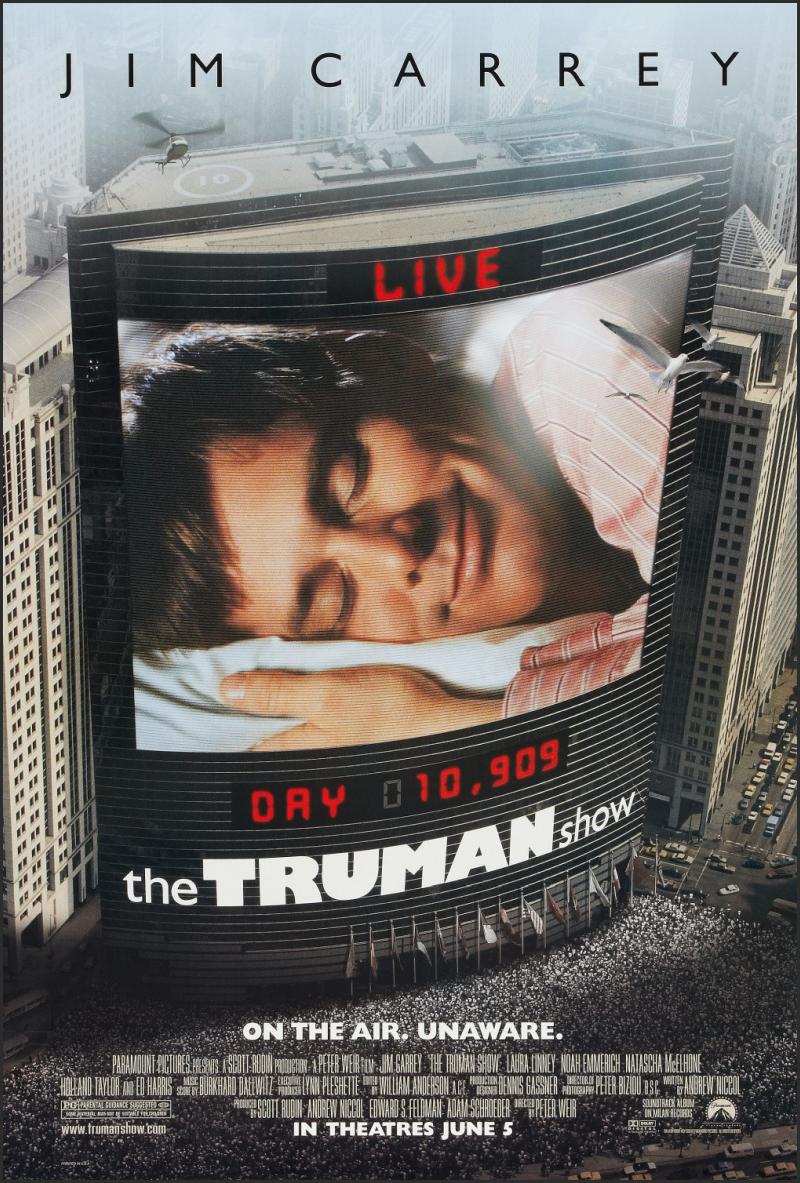Digital Activism. Obviously, there should be no link between the Truman Show, precary and slacktivism. Although the invention of the word Slacktivism dates back to 1995s, the actual use of the word reaches 2001, and it really goes back to 2010. If we come to the word Prekarya, although it was found to be used in a few French articles in the 1980s and in several articles in the 1990s, Standing’s Prekarya: New Dangerous Class book published in 2011, which introduced the word in its current sense. In other words, Truman Show has succeeded in creating a symbolism that covers and explains these concepts that we are exploring as of today, as the viewers fiction.
The first viewers we met in the movie are two women working at the bar. Simultaneously we meet Sylvia. Sylvia is the only character who has entered Sea Heaven as far as we know, trying to explain to Truman that her world is actually a fiction. From the conversations between the bar staff, we understand that when Truman is concerned, the audience is not able to distinguish between reality and fiction, and that they know that Truman is real, and their life is fiction, but they are already confused in the minds. In the meantime, we observe that well-dressed customers watch the Truman Show with great excitement besides those working at the bar.
Seeing her father, who had leaked into the program, played the role of father for years and thought Truman was dead, encouraged Truman to go out of Sea Heaven. The director of the program, Cristof, brings Truman together with his father and shoots two birds with a stone: he has always found a way to capture Truman, and there are moments of emotion that will lock the audience on the screen. In the meantime, two old women watching the show together appear for the first time.
In the sequence that appears as a promotional trailer, we see places such as a screen on a busy street where the show is watched, and a festival scene. In a discussion program on the program, we learn that there are people who attempt to infiltrate the show outside of Truman’s father, and this is presented as a kind of security issue. However, we realize that the archetypes announced by Negri and Hardt in the Announcement are all included in the film: those who are secured, borrowed, mediaized and finally represented.
In the conversation between Cristof and Sylvia, one of the indispensables of the political scene is repeated: Sylvia’s nerve, who struggles with injustice, makes her look as if she is wrong among the calm and demagogies of Cristof. Cristof tells Truman that he can do anything if he wants, but he is offered the best possible life. During this discussion, we see that Sylvia’s house is full of banners, banners and slogans. Sylvia does not hesitate to put herself on fire for the sake of resistance.
Apart from the audience we counted so far, we encounter a middle-aged man in the tub, a mother with two children, an Asian family, and two police officers. The most prominent common point of all these characters, created for the diversity of the audience, is that we can see each of them as a part of precariousness today. These people, who have made the Truman Show an indispensable part of their own lives, experience tremendous joy when Truman succeeds in leaving the program, and they return to their lives with the end of the program. Except for Sylvia: she rushes out to reach Truman.
An important part of our behavior on the internet today coincides with the behavior of the audience on the Truman Show, especially what we did by pursuing a political goal. While he was very good at watching, following, and presenting what we watch as an important part of our identity while avoiding all responsibility, our fears really prevented us from putting our action under the stone.
Our political activity on the internet is not reflected in other areas, but we are tremendously active on online platforms, and we believe that this is the transformative force, a kind of conscience masturbation. Undoubtedly, digital activism is better than doing nothing, but when all we do is digital activism, we turn into individuals who are prone to believe in lies, distant to street resistance, unless we are part of the real movements supported by the use of online platforms.
The difference of Sylvia from other viewers is that she does not hesitate to endanger herself in line with the values she believes in, Truman believes that one day she can be free and provides the tools necessary for this to happen thanks to her love and belief. If we put it in a Spinoza way, it is the best life organization for him and Truman.
Meanwhile, things like being a “marginal minority” being stigmatized by the mainstream media do not intimidate him, but in a universe where everyone seems to be mad, even if he is separated from everyone else by the fact that he really wants Truman to be saved, unlike those who say he loves Truman. thanks to Sylvia. Other spectators have become a tool to keep Truman in the program different from the players placed in Sea Heaven, in a way that does not create an effect. The forms of false-activism, which only proceed through virtual platforms and are far from real sanctions, are often referred to in a similar way when examined by experts.
The Truman Show seems to shed light on the issues that have begun to take place in the center of our lives today, but that we have just started to name. There are still lessons we can draw from the movie as individuals who are increasingly struggling to distinguish between real and virtual.
The Truman Show (1998)
Directed by: Peter Weir
Starring: Jim Carrey, Laura Linney, Noah Emmerich, Holland Taylor, Natascha McElhone, Ed Harris, Brian Delate, Peter Krause, Heidi Schanz, Judy Clayton, Fritz Dominique
Screenplay by: Andrew Niccol
Production Design by: Dennis Gassner
Cinematography by: Peter Biziou
Film Editing by: William M. Anderson, Lee Smith
Costume Design by: Marilyn Matthews
Set Decoration by: Nancy Haigh, J Sanchez
Art Direction by: Richard L. Johnson
Music by: Burkhard Dallwitz
MPAA Rating: PG for thematic elements and mild language.
Distributed by: Paramount Pictures
Release Date: June 5, 1998
Views: 187















